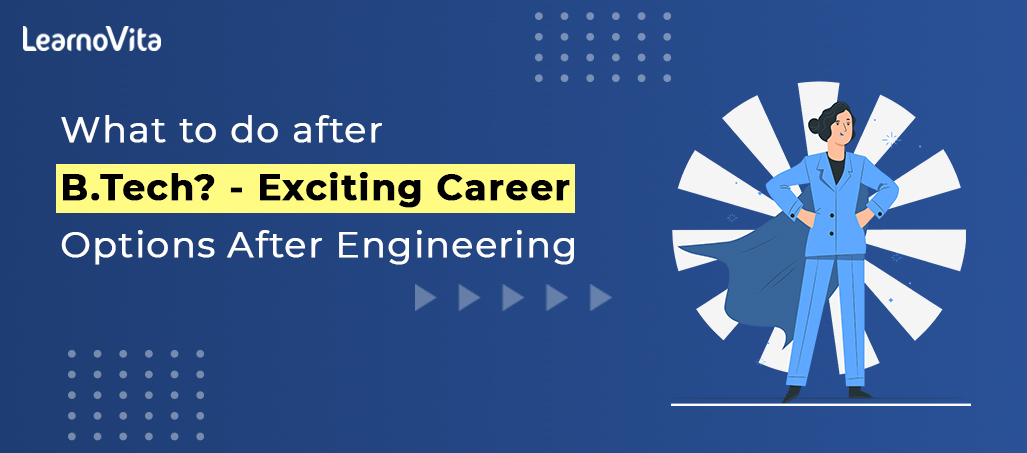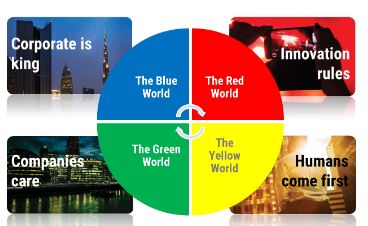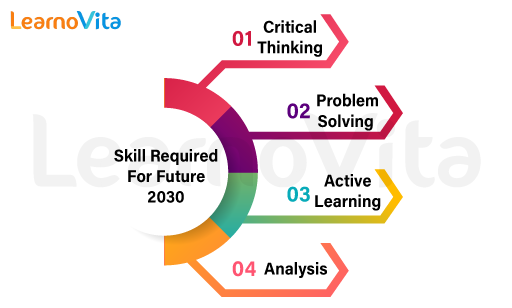
Future Work in 2030 – Exciting Career Options
Last updated on 27th Oct 2022, Artciles, Blog
- In this article you will get
- Introduction
- What is the Future of Work?
- Four possible worlds of work in 2030
- Future of Work in 2030
- Megatrends in Job Roles
- Most in-demand skills for the Future of Work
- Top Future Jobs in 2030
Introduction
Will technological advancements lead to the elimination of employment and a worsening of inequality, or will they lead to more meaningful labour and healthier societies? Since certain manual labour positions were replaced by machines, this has been a constant source of concern for humanity. Once we had more advanced technology, we no longer needed the services of a clock keeper, film projectionist, switchboard operator, etc.
What is the Future of Work?
The advent of digital cameras and smart phones revolutionised the photographic process. Photographers had no choice but to adopt the new technology if they wanted to survive. Once upon a time, no one would have predicted that these high-profile occupations would soon become obsolete.
But we’ve improved greatly because of the lessons we’ve learnt since then. Based on our experience, we know that automation, outsourcing, and self-organizing teams have the potential to render the human resources department obsolete in the near future. It is not difficult to picture a future in which competition for skilled professionals is so intense that they must employ personal agents to handle their professional lives. The point is to always have contingency plans in place.
LearnoVita has been assisting students in adapting to the ever-evolving business environment for the last decade. Consider the workplace of 2030, ten years from now.
Four possible worlds of work in 2030
PwC identifies four distinct colour-coded work environments. As technology makes small enterprises more competitive, the globe may eventually shift away from large corporations. One possible future involves business entities cooperating for the common good. Check this out:
Planet Red:
Here, small enterprises will be able to access huge resources like knowledge, expertise, and capital thanks to technological advancements. Human resources will be eliminated as a distinct discipline, and startups will increasingly use third-party providers to manage their workforces. There would be strong competition for talent, with the best pay going to those who possess the abilities most likely to be in high demand in the future.
A World in Blue:
This is where multinational firms will grow to unprecedented size and influence. Organisations often believe that their size and power provide the greatest defence for their bottom lines. Successful people compete aggressively for available top talent.
More Eco-Friendly World:
Companies will drive an aggressive ethical and environmental agenda in response to vocal public opinion, limited resources, and stringent international rules.
The World in Yellow:
In this setting, both employees and businesses will look for deeper motivations. Employers with high moral and ethical standards will attract and retain talented people who value independence, versatility, and purpose in their work. Foremost in the workplace of the future will be the principle of equitable compensation.

Future of Work in 2030
Workplaces of the future will look substantially different from their present-day counterparts, as suggested by an article in the WSJ and two separate studies released by CBRE and Genesis. This is what the workplace of the year 2030 would look like, hypothetically speaking:
- There will be separate “Places to Job” instead of allotted seats, the greatest workplaces will provide a variety of quiet spaces where employees may get their work done.
- There will be a proliferation of smaller, independently operated businesses. With so many potential avenues for teamwork, there will be no need to invest much in a monolithic corporation.
- There will be much less of a formal hierarchy since everyone will be a leader. Teamwork is more effective than leadership by one person.
- There will be a significant shift towards promoting health and wellness in the workplace.
- Having a “Chief of Work” who establishes the norms for the whole company is essential. This position has the potential to be one of the most promising in the years to come.
Modifiable Level Plans:Employees may arrive at their office building and be told which floor to go on depending on data collected by their wearable gadgets.
Your Robot Assistant :In the future, all employees, regardless of position, will use robotic aides like Siri or Alexa to manage their daily tasks, such as answering emails, setting up meetings, making spreadsheets, etc.
Smarter brainstorming nine:Most meetings will include personnel from various places, enabling for easy communication across time zones and the exchanging of ideas.
The Digital Water Cooler :People will chat informally using VR and AR goggles.
Megatrends in Job Roles
Pearson performed research on the state of the labour market and the state of knowledge workers in 2030 and found certain patterns in occupations to watch for.
Predictions suggest that just one in five people now employed will be doing so in the future.
Despite predictions of decline, there may be opportunities at various levels of education and training in the construction, building, and agricultural industries.
They estimate that just one in ten people employed in industries with projected job growth—including education and healthcare—are really doing so.
Seven out of ten employees, according to a prediction by Pearson, are in occupations with higher levels of future uncertainty.
Complex problem solving, creativity, idea fluency, and active learning are all highlighted as crucial in their research. These are the cutting-edge competencies that employers will seek out.
Based on their research, they identified which kind of knowledge, skills, and talens would be in most demand in the next few years.
Most in-demand skills for the Future of Work
The study report from McKinsey Global Institute identifies the top three skill sets people will need to earn the greatest professions of the future. Here are the top five future-proof abilities:
Cognitively superior abilities include not just high levels of reading and writing proficiency but also critical thinking, numeric analysis, and statistical reasoning. Users include physicians, accountants, analysts, and authors.
Emotional and social competencies include high-level talkers, empathizers, flexible individuals, and lifelong learners. The fields of business growth, programming, and counselling all call on these abilities. For the next decade, these occupations will likewise be highly desirable.
Technological entails all levels of expertise in information technology, data analysis, and engineering. In the future, these abilities will certainly fetch the highest salaries.

Top Future Jobs in 2030
Cognizant and ZDNet analysed the current significant technical and economic trends and came up with a list of the greatest occupations and vocations that will develop over the next decade.
The primary goal of the Virtual Store Sherpa will be to ensure customer pleasure by providing knowledgeable product recommendations and virtual in-store assistance.The role of the personal memory curator is to engage with patients and other stakeholders to develop the requirements for VR experiences.The Augmented Reality Journey Builder team will work with skilled programmers and visual designers to provide pivotal features for their customers.To prevent accidents, the “highway controller” will keep a close eye on all of the systems that handle the control of traffic and the use of the airspace.
- Genealogist who makes artificial organs for sports and military.
- Healthcare will be revolutionised by nanomedicine.
- Genetic modification, often known as recombinant farming, will revolutionise the cattle industry.
- A wellness consultant for the elderly will focus on the emotional and practical well-being of their clients.
- After a person’s memory has reached its limit, a surgeon may enhance it.
- Philosophers of the “new science” shall cross the river of development.
- They will enable pilots, tour guides, and architects to settle on the moon.
Are you looking training with Right Jobs?
Contact Us- Hadoop Tutorial
- Hadoop Interview Questions and Answers
- How to Become a Hadoop Developer?
- Hadoop Architecture Tutorial
- What Are the Skills Needed to Learn Hadoop?
Related Articles
Popular Courses
- Hadoop Developer Training
11025 Learners - Apache Spark With Scala Training
12022 Learners - Apache Storm Training
11141 Learners
- What is Dimension Reduction? | Know the techniques
- Difference between Data Lake vs Data Warehouse: A Complete Guide For Beginners with Best Practices
- What is Dimension Reduction? | Know the techniques
- What does the Yield keyword do and How to use Yield in python ? [ OverView ]
- Agile Sprint Planning | Everything You Need to Know
